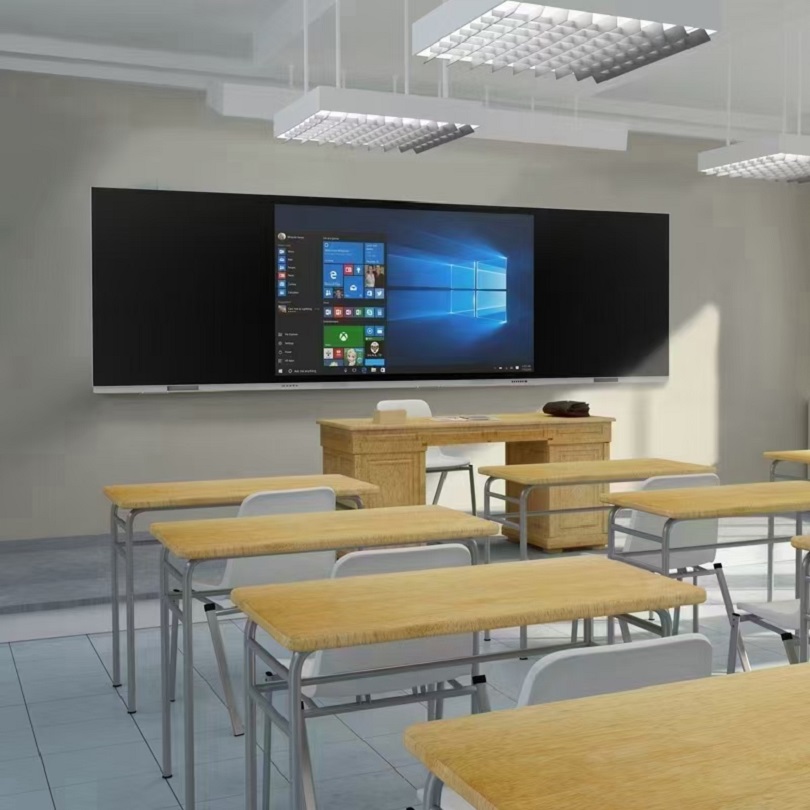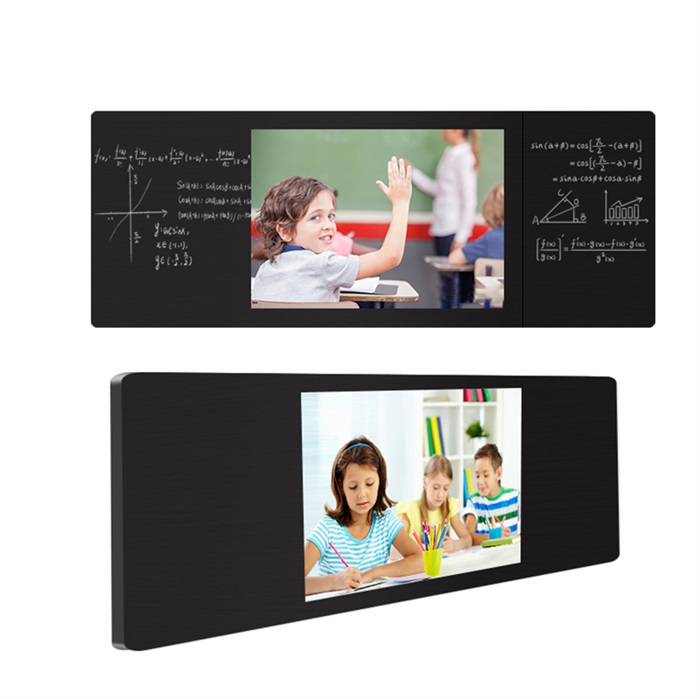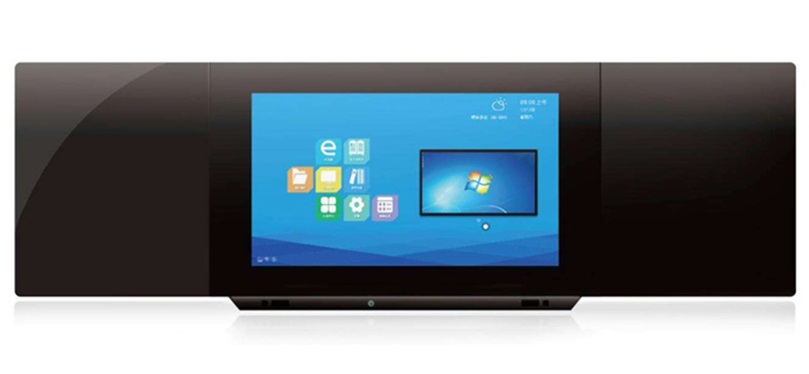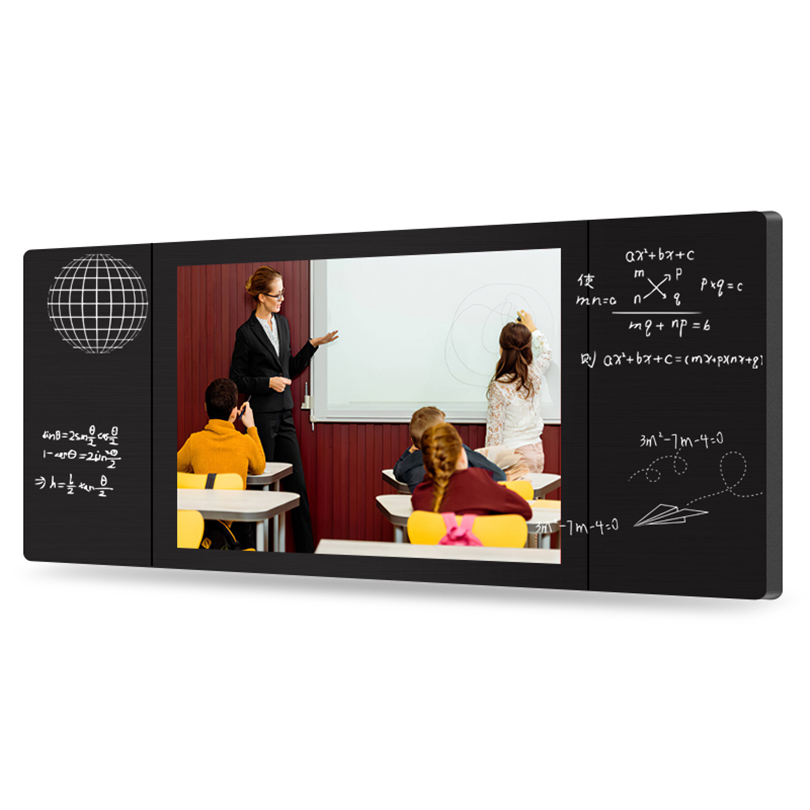Text / Lu Jiqiang China's lighting and lighting industry, in recent years, from manufacturers to dealers have been exploring the channel transformation of the channel revolution, terminal revolution, let lighting lighting sales out of the wall of the professional market, boarded the brand store's elegant . From comprehensive franchise stores to brand stores and even large independent retail stores, a small number of operators have tried chain operations in the region. However, due to various subjective and objective reasons, in the lighting and lighting industry, it has not been able to establish large-scale chain stores such as building materials, decoration, home, furniture, home appliances, etc., and the industry tends to be marginalized in the home decoration industry chain. It has always been a supporting role, although it is indispensable, but it is a "non-famous actor". How to take the road of lighting lighting chain stores? I think we should build a model and framework for the chain operation of lighting lighting, and grasp the following fifteen aspects:
1 Follow the three principles of chain operations that are different from traditional businesses:
Operational principle
1) Product and price 2) Idea 3) Layout 4) Image 5) Management 6) Service These 6 unifications are the core.
2. The scale of operations is based on the size of the local market to consider the unit of the chain store. Relying on the advantages of the supply chain, we will establish the principle of the local business variety, business scale and sales scale of the store.
3. The operation system realizes product scale, unified management and business standardization. In order to ensure the reduction of operational risks in chain operations, the three advantages of obtaining upstream resource security and reducing publicity and promotion expenses are effectively reflected.
2 Grasp the concept of large-scale, low-link, low-cost, fast turnover of chain operations.
To this end, the division of labor should be clearly defined in the management responsibilities: the chain headquarters is responsible for planning, control, capital, accounting, procurement, planning, etc., centrally and uniformly formulate policies to control business flow, logistics, information flow and capital flow. The provincial center stores are responsible for the services, distribution, warehousing, sample lights, market management, network development, Anwei security, and business supervision of various chain stores in the region. Do everything around the chain center store to operate.
3 There must be a clear direction in the positioning of the operation characteristics of the chain stores:
Such as quality, serialization, advancement, specialization, etc., especially in the service, more emphasis on providing professional pre-sales, sales, after-sales service, the use of VIP card and other database marketing tools, to eat a line of e-commerce, A network of exhausted, sky-to-ground marketing ideas, the chain store is truly built into an open, shared service platform.
4 With franchise as an important means of expansion, the partnership system is the privilege link:
Integrate the time, place, people and advantages of all parties, and share human, financial and material resources to achieve rapid expansion. Let the franchisees unite with the franchisees, so that the former can benefit from the well-known brands, trademarks, service reputations, trade names, and consumers' recognition of famous brands, which can greatly shorten the investment period of franchisees and reduce the business risks of franchisees. . The famous Sichuan cuisine Tan Yutou successful chain is benefited from its expansion theory and business courage: "There is no name on the chain, there is no strength on the scale" is a very typical franchise chain success story. Because rapid logistics, capital flow and information flow are the magic weapon for franchising to reduce costs. The biggest advantage of “franchise†is reflected in centralized procurement and distribution. At the same time, in order to facilitate the franchisees to accurately and conveniently grasp the project business opportunities, the principles of specialization, standardization and simplification should be followed in business management.
5 The following should be prepared before the implementation of the chain project:
1. Management team building 2. Market research 3. Market analysis
4. Regional selection 5. Target market positioning 6. Target customer analysis (upstream supplier/downstream franchisee) 7. Service and price 8. Advertising appeal and planning
6 Project preparation needs to be prepared
1. Project Design 2. Policy Development 3. Visual Display System (VI)
4. Promotional advertising 5. Media combination release strategy 6. Promotion (joining) speech
7. Negotiation strategy 8. Model shop startup plan 9. Market control means
10. Suppliers and franchisees must develop an efficient business opportunity integrated marketing communication strategy, develop persuasive and provocative project information, and establish their own unique brand image and brand personality.
7 Establish a project credit environment
1. Establish the investment promotion (upper and lower) theory of the project
2. Establish a project evaluation system
3. Establish project operation system (chaining mode, profit mode, operation mode, investment procurement mode, promotion mode, etc.)
4. Establishing the project value chain, this is an important part of the project to win the trust of the people. The essence of the project is to re-integrate the industry value chain, capture and tap new profit points in the industry, and let the upstream and downstream franchisees truly feel the reality of business opportunity value. In order to attract them to actively participate in the ranks of the chain.
8 Project opportunity attention factor arrangement.
The attention of the upstream and downstream franchisees to the project usually has the following aspects:
1. Project selling point (core competitiveness) 2. Project market potential
3. Business opportunity profit space 4. Join the main credit background
5. Model store operation 6. Advertising support
7. Marketing program professional level 8. Market competition status
9. Supporting service support 10. Project upgrade prospects In addition, franchisees are also very concerned about the credibility of the project's comprehensive operational capabilities, mainly business ideas, management level, market planning and operational capabilities, public relations within and outside the industry.
9 Project opportunity information release
1. Determine the project opportunity information target audience 2. Determine the project opportunity communication target
3. Design project business opportunity information 4. Select communication channels
5. Prepare a communication budget 6. Develop a communication mix
7. Consider the communication 8. Management coordination project business opportunity marketing communication To this end, the project investment information design should pay attention to the following aspects:
1) What to say (planning of information content)
2) How to describe project information (information structure) according to the target customer's thinking mode
3) What symbol is used for representation (information format)
4) Who is (information source) is usually clear 5 WH: WHO (who is the target customer?) WHAT (What kind of information is released?) WHEN (what kind of timing is chosen?) WHERE (what kind of place to choose? WHY (Why? What is the rationale and basis for the decision?) HOW (How to communicate)
In addition, the requirements for a project business manual are: exquisite design, detailed content, full of motivation and explanatory power, can convey business content, project investment policy, corporate background, business philosophy and culture.
10 Work to be done in the specific implementation of the project:
1. Business negotiation procedure 2. Customer visit plan 3. Standard contract text
4. Project introduction materials preparation 5. Advertising and public relations promotion 6. Media integration plan
7. Display content design 8. Forum theme content 9. Project management
10. Customer Credit Management 11. Customer Relationship Maintenance 12. Project Content Correction
11 Eight Principles to Ensure Project Success
1. Enterprise consolidation and self-positioning of project business resources
2. Research and determine the profit model of the project
3. The reserve and dispatching capacity of the company's investment funds
4. Effective mastery of key aspects of systemic investment and modelling of market terminal sales.
5. Rationality of enterprise human resource allocation and internal management
6. The endurance of the company's investment promotion process (not halfway)
7. The sample market is the key to checking the project's marketing model and profit model.
8. Keeping faith is constant, words must be done, and actions must be fruitful.
12 chain store model creation
1. Operation mode (6 departments: sales department, purchasing department, marketing department, service department (including distribution), finance department, administrative personnel department)
2. Continuous mode (management store, center store, general store, franchise store, direct store)
3. Profit model (small profits but quick turnover, scale effect, profit margin)
4. Procurement investment model (cooperation with suppliers and joint venture and settlement methods of franchisees)
5. Promotion and promotion model (relatively fixed and effective investment promotion, opening promotion, promotion advertising, etc.)
13 Basic ideas for chain development
1. Development of regional, Beijing, Shanghai, Guangzhou, Shenzhen and other two categories, Chengdu, Chongqing, Wuhan, Tianjin, Nanjing, Hangzhou, ordinary provincial capital cities and cities with separate plans, four more economically developed regions and counties District town
2. The store environment, building materials, home, furniture, decoration and other chain supermarkets (such as B&Q, Ou Peide, Oriental Home, JSWB, etc.)
The second category, building materials, home, furniture, decoration and other professional markets are adjacent to the three categories, lighting market
3. Areas of business area, 3-5 stores in the same city chain, single store area 4-5 thousand m2
The second-class area, the same city single store 5,000 m2 or more stores (four -6 thousand m2 each store)
Three types of cities, the same city single store 4 -6 thousand m2
Four types of cities, the same city single store 3 -5 thousand m2
4. Mode of operation: The first-class self-operated or joint-venture type 2 or four-category areas are jointly or joined.
5. Settlement method:
Usually, the agency sales monthly settlement, distribution distribution, credit line, and sales of the sample sales are completed. The sample lamps are discounted, and the goods are sold first, and the cash is cash. (down to version 31)
Editor in charge: He Chunyan layout design: Hong Jinhua Art Director: Peng Anjun

1 Follow the three principles of chain operations that are different from traditional businesses:
Operational principle
1) Product and price 2) Idea 3) Layout 4) Image 5) Management 6) Service These 6 unifications are the core.
2. The scale of operations is based on the size of the local market to consider the unit of the chain store. Relying on the advantages of the supply chain, we will establish the principle of the local business variety, business scale and sales scale of the store.
3. The operation system realizes product scale, unified management and business standardization. In order to ensure the reduction of operational risks in chain operations, the three advantages of obtaining upstream resource security and reducing publicity and promotion expenses are effectively reflected.
2 Grasp the concept of large-scale, low-link, low-cost, fast turnover of chain operations.
To this end, the division of labor should be clearly defined in the management responsibilities: the chain headquarters is responsible for planning, control, capital, accounting, procurement, planning, etc., centrally and uniformly formulate policies to control business flow, logistics, information flow and capital flow. The provincial center stores are responsible for the services, distribution, warehousing, sample lights, market management, network development, Anwei security, and business supervision of various chain stores in the region. Do everything around the chain center store to operate.
3 There must be a clear direction in the positioning of the operation characteristics of the chain stores:
Such as quality, serialization, advancement, specialization, etc., especially in the service, more emphasis on providing professional pre-sales, sales, after-sales service, the use of VIP card and other database marketing tools, to eat a line of e-commerce, A network of exhausted, sky-to-ground marketing ideas, the chain store is truly built into an open, shared service platform.
4 With franchise as an important means of expansion, the partnership system is the privilege link:
Integrate the time, place, people and advantages of all parties, and share human, financial and material resources to achieve rapid expansion. Let the franchisees unite with the franchisees, so that the former can benefit from the well-known brands, trademarks, service reputations, trade names, and consumers' recognition of famous brands, which can greatly shorten the investment period of franchisees and reduce the business risks of franchisees. . The famous Sichuan cuisine Tan Yutou successful chain is benefited from its expansion theory and business courage: "There is no name on the chain, there is no strength on the scale" is a very typical franchise chain success story. Because rapid logistics, capital flow and information flow are the magic weapon for franchising to reduce costs. The biggest advantage of “franchise†is reflected in centralized procurement and distribution. At the same time, in order to facilitate the franchisees to accurately and conveniently grasp the project business opportunities, the principles of specialization, standardization and simplification should be followed in business management.
5 The following should be prepared before the implementation of the chain project:
1. Management team building 2. Market research 3. Market analysis
4. Regional selection 5. Target market positioning 6. Target customer analysis (upstream supplier/downstream franchisee) 7. Service and price 8. Advertising appeal and planning
6 Project preparation needs to be prepared
1. Project Design 2. Policy Development 3. Visual Display System (VI)
4. Promotional advertising 5. Media combination release strategy 6. Promotion (joining) speech
7. Negotiation strategy 8. Model shop startup plan 9. Market control means
10. Suppliers and franchisees must develop an efficient business opportunity integrated marketing communication strategy, develop persuasive and provocative project information, and establish their own unique brand image and brand personality.
7 Establish a project credit environment
1. Establish the investment promotion (upper and lower) theory of the project
2. Establish a project evaluation system
3. Establish project operation system (chaining mode, profit mode, operation mode, investment procurement mode, promotion mode, etc.)
4. Establishing the project value chain, this is an important part of the project to win the trust of the people. The essence of the project is to re-integrate the industry value chain, capture and tap new profit points in the industry, and let the upstream and downstream franchisees truly feel the reality of business opportunity value. In order to attract them to actively participate in the ranks of the chain.
8 Project opportunity attention factor arrangement.
The attention of the upstream and downstream franchisees to the project usually has the following aspects:
1. Project selling point (core competitiveness) 2. Project market potential
3. Business opportunity profit space 4. Join the main credit background
5. Model store operation 6. Advertising support
7. Marketing program professional level 8. Market competition status
9. Supporting service support 10. Project upgrade prospects In addition, franchisees are also very concerned about the credibility of the project's comprehensive operational capabilities, mainly business ideas, management level, market planning and operational capabilities, public relations within and outside the industry.
9 Project opportunity information release
1. Determine the project opportunity information target audience 2. Determine the project opportunity communication target
3. Design project business opportunity information 4. Select communication channels
5. Prepare a communication budget 6. Develop a communication mix
7. Consider the communication 8. Management coordination project business opportunity marketing communication To this end, the project investment information design should pay attention to the following aspects:
1) What to say (planning of information content)
2) How to describe project information (information structure) according to the target customer's thinking mode
3) What symbol is used for representation (information format)
4) Who is (information source) is usually clear 5 WH: WHO (who is the target customer?) WHAT (What kind of information is released?) WHEN (what kind of timing is chosen?) WHERE (what kind of place to choose? WHY (Why? What is the rationale and basis for the decision?) HOW (How to communicate)
In addition, the requirements for a project business manual are: exquisite design, detailed content, full of motivation and explanatory power, can convey business content, project investment policy, corporate background, business philosophy and culture.
10 Work to be done in the specific implementation of the project:
1. Business negotiation procedure 2. Customer visit plan 3. Standard contract text
4. Project introduction materials preparation 5. Advertising and public relations promotion 6. Media integration plan
7. Display content design 8. Forum theme content 9. Project management
10. Customer Credit Management 11. Customer Relationship Maintenance 12. Project Content Correction
11 Eight Principles to Ensure Project Success
1. Enterprise consolidation and self-positioning of project business resources
2. Research and determine the profit model of the project
3. The reserve and dispatching capacity of the company's investment funds
4. Effective mastery of key aspects of systemic investment and modelling of market terminal sales.
5. Rationality of enterprise human resource allocation and internal management
6. The endurance of the company's investment promotion process (not halfway)
7. The sample market is the key to checking the project's marketing model and profit model.
8. Keeping faith is constant, words must be done, and actions must be fruitful.
12 chain store model creation
1. Operation mode (6 departments: sales department, purchasing department, marketing department, service department (including distribution), finance department, administrative personnel department)
2. Continuous mode (management store, center store, general store, franchise store, direct store)
3. Profit model (small profits but quick turnover, scale effect, profit margin)
4. Procurement investment model (cooperation with suppliers and joint venture and settlement methods of franchisees)
5. Promotion and promotion model (relatively fixed and effective investment promotion, opening promotion, promotion advertising, etc.)
13 Basic ideas for chain development
1. Development of regional, Beijing, Shanghai, Guangzhou, Shenzhen and other two categories, Chengdu, Chongqing, Wuhan, Tianjin, Nanjing, Hangzhou, ordinary provincial capital cities and cities with separate plans, four more economically developed regions and counties District town
2. The store environment, building materials, home, furniture, decoration and other chain supermarkets (such as B&Q, Ou Peide, Oriental Home, JSWB, etc.)
The second category, building materials, home, furniture, decoration and other professional markets are adjacent to the three categories, lighting market
3. Areas of business area, 3-5 stores in the same city chain, single store area 4-5 thousand m2
The second-class area, the same city single store 5,000 m2 or more stores (four -6 thousand m2 each store)
Three types of cities, the same city single store 4 -6 thousand m2
Four types of cities, the same city single store 3 -5 thousand m2
4. Mode of operation: The first-class self-operated or joint-venture type 2 or four-category areas are jointly or joined.
5. Settlement method:
Usually, the agency sales monthly settlement, distribution distribution, credit line, and sales of the sample sales are completed. The sample lamps are discounted, and the goods are sold first, and the cash is cash. (down to version 31)
Editor in charge: He Chunyan layout design: Hong Jinhua Art Director: Peng Anjun

Smart Blackboard Product Line Overview
The Smart Blackboard product line offers cutting-edge interactive teaching solutions designed to revolutionize the classroom experience. Our innovative range of products seamlessly integrates advanced technology with versatile features, enhancing both teaching and learning processes. Here's a breakdown of our Smart Blackboard product categories:

Interactive Whiteboards
Elevate traditional teaching methods with our interactive whiteboards. These feature-rich boards offer multi-touch capabilities, allowing up to 20 simultaneous touch points and 20-pen writing support. With a touch resolution of up to 32767 x 32767, these whiteboards provide an exceptional and intuitive user experience.
OPS Module Integration
Our Smart Blackboards are equipped with modular OPS (Open Pluggable Specification) integration. Powered by Intel Core i5 processors with a minimum of 8GB RAM and 256GB SSD storage, these modules ensure seamless integration and efficient performance.
Teaching Software Suite
Our comprehensive teaching software suite offers an array of tools tailored to educators' needs. From interactive annotation tools to mathematical equation recognition and 3D visualization capabilities, our software enhances engagement and understanding in the classroom.

Cloud Connectivity and Content Sharing
Harness the power of the cloud with our built-in cloud storage solution. Offering 50GB or more of storage space, educators can easily save and access lesson materials, share content, and facilitate collaborative learning experiences. Cloud-based game templates add an element of fun to lessons.
Multi-Mode Functionality
Adapt to various teaching scenarios with ease using our multi-mode functionality. From preparation to presentation, Smart Blackboards offer modes such as Lesson Preparation, Lecture Mode, Desktop Mode, and PPT Mode. These modes optimize the user interface for specific teaching stages.
Gesture Recognition and Smart Features
Enhance user interaction with advanced gesture recognition technology. Utilize intuitive hand gestures for functions such as erasing, screen capture, and zooming. The Smart Blackboard's dynamic floating menu offers quick access to tools, ensuring a seamless teaching experience.
Subject-Specific Templates and Tools
Our software includes subject-specific templates and tools, tailoring the teaching experience to various disciplines. Whether it's mathematics, physics, chemistry, or language arts, educators can access specialized tools to enhance their lessons.

Wireless Connectivity and Remote Control
Enable wireless connectivity through Wi-Fi and Bluetooth 4.2, allowing teachers and students to connect their devices effortlessly. With remote control capabilities and multi-screen interaction, content sharing and collaboration are simplified.
Robust Hardware Design
The Smart Blackboard's robust hardware design includes a durable metal frame and explosion-proof glass surface with a hardness rating of at least 7 on the Mohs scale. It meets stringent durability standards to withstand the rigors of educational environments.
Security and Management Features
Smart Blackboards offer advanced security and management features, including fingerprint authentication for access control and administrator privileges. This ensures a secure and controlled classroom environment, preventing unauthorized use.

The Smart Blackboard product line is designed to inspire interactive and dynamic teaching methods while fostering collaborative learning environments. With cutting-edge technology and a wealth of features, our products redefine the way educators engage with students, creating immersive and impactful educational experiences.
Blackboard,Smart Blackboard,Interactive Blackboard,Nano Blackboard,Digital Blackboard
Jumei Video(Shenzhen)Co.,Ltd , https://www.jmsxdisplay.com
